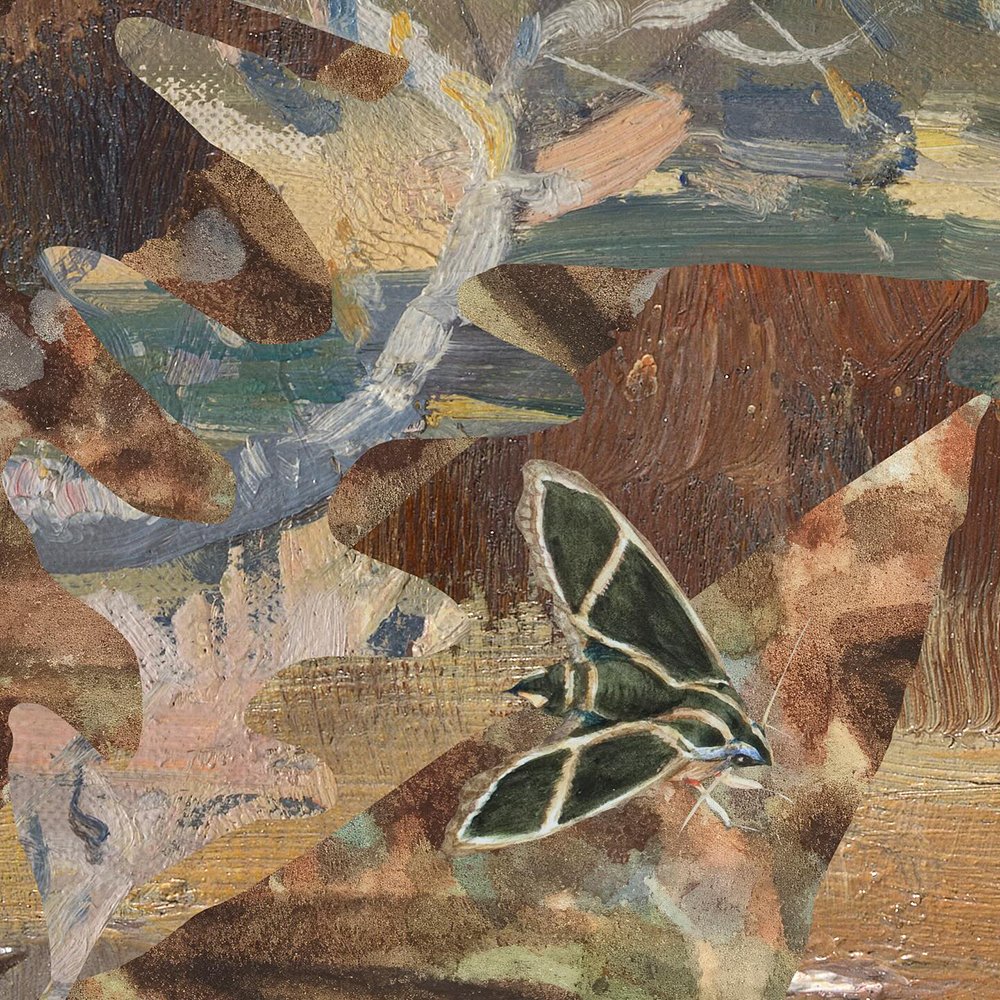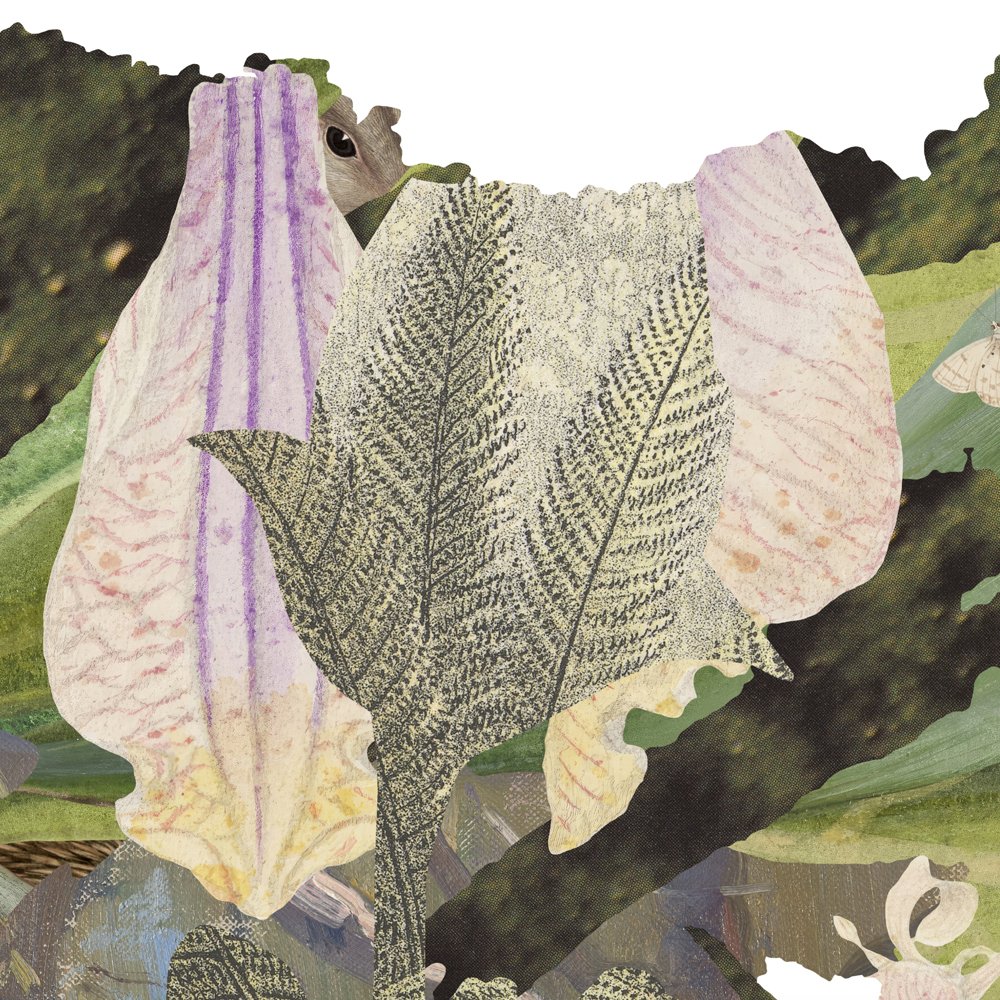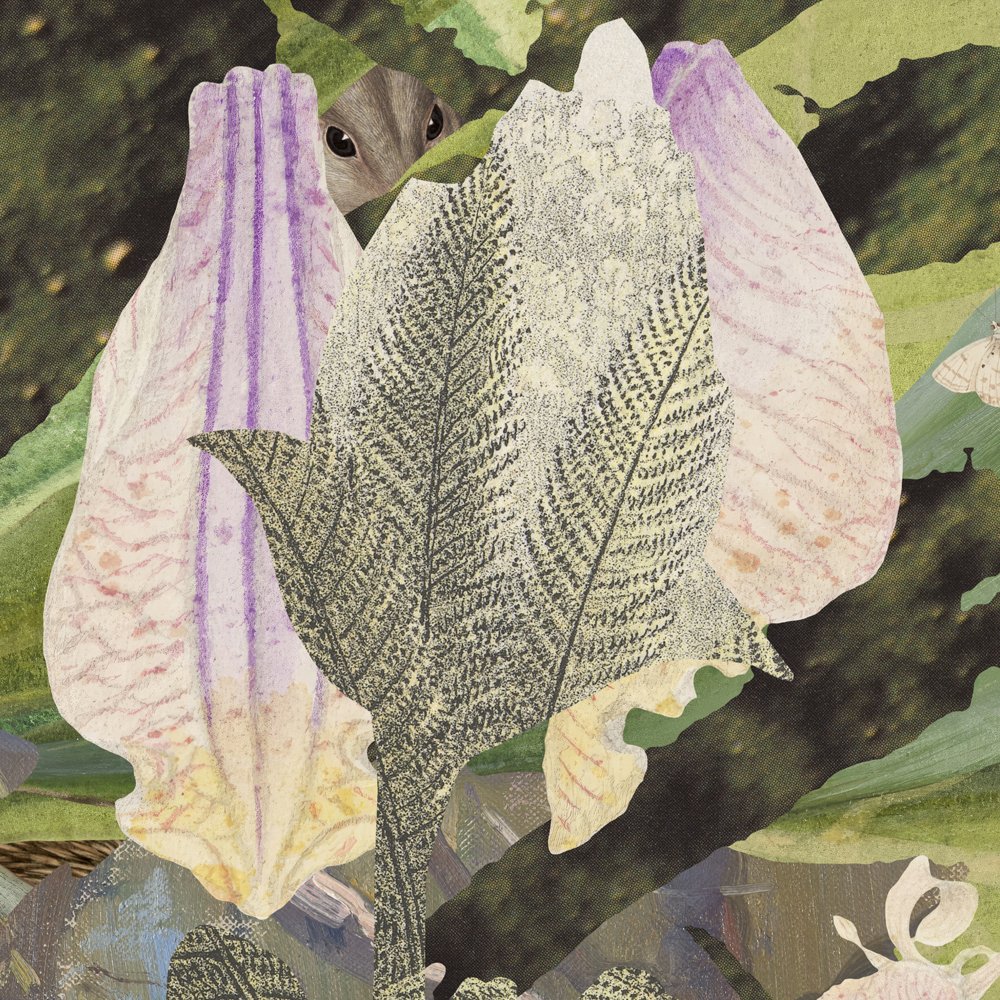RESTORING CORRIDORS, TAKEN UP AGAIN
As night gathers, one by one they will be able to make their way back to the wild. Their absence from the enclosure, in the weeks that follow, will signal their successful absorption back into the safe, free fold of the leaves; the soft and nimble embodiment of ‘wilderness’, slowly, knowing growing, their way home.
Gracia Haby & Louise Jennison
Restoring corridors, taken up again
2025
12 page, nine-hole pamphlet stitched, artists’ book with fold-out colour image insert, with A good soft release site is a connected site (by Gracia Haby), Indigo Digital CMYK on 150gsm Envirocare + 200gsm Ecostar Silk, with cover, Indigo Digital CMYK on 300gsm Envirocare
Printed by Bambra
Bound by Gracia Haby & Louise Jennison, with hand-cut elements
Edition of 100
Springing from Restoring corridors of 2024, a multi-panelled, double-sided artists’ book that forms an interchangeable, reversible 100cm x 300cm slice of biodiversity in flux, when hung on the wall, comes the (closer to) pocket-sized version, Restoring corridors, taken up again. Where the former was housed within an original hand-painted watercolour box, the latter comes folded and zipped.
Restoring corridors, taken up again was launched from our stall at the eleventh Melbourne Art Book Fair, NGV International (Friday 16th of May – Sunday 18th of May, 2025). We also read it aloud, as part of our Kids Pumpkin Storytime session, presented by NGV, on Saturday 17th of May, beneath Kusama’s Dancing Pumpkin.
Editions of Restoring corridors, taken up again have been acquired by State Library Victoria, and the Research Library and Archive of the Art Gallery of NSW.
You can order a copy through our online store, and read but a taste below, or in full on Marginalia.
●
…
Of entering another kind of space, I am reminded of Annie Dillard’s individual connection with a weasel “who was looking up at [her]” as he emerged from “beneath an enormous shaggy wild rose bush”, in ‘Living Like Weasels’ from Dillard’s essay collection Teaching a Stone to Talk (1982)[iv]. “He was ten inches long, thin as a curve, a muscled ribbon, brown as fruitwood, soft-furred, alert.” They locked eyes, and it felt as though “someone threw away the key.” Held, in that connection, it “moved the fields, and drained the pond; the world dismantled and tumbled into that black hole of eyes.” Later, Dillard describes the impression left when the weasel disappeared as “already I don’t remember what shattered the enchantment. I think I blinked, I think I retrieved my brain from the weasel’s brain, and tried to memorise what I was seeing, and the weasel felt the yank of separation”. In that encounter, where something new emerged, a new space, a new kind of knowing, they had both “plugged into another tape simultaneously, for a sweet and shocking time.” Right there on the page, Dillard left the space she’d known, and was guided by a different kind of knowing[v].
Equally, when Kathleen Jamie notes an extraordinary silence that radiates from the mountains and the sky, from “a mineral silence, which presses powerfully upon our bodies, coming from very far off”[vi] (in Sightlines, 2012), this is not unlike how it feels to be in the presence of a wild animal, to look into their eyes, to feel as though you are held in a radiant connection. That for one moment, you see the smallest of fragments of what they see. And you feel you are a million miles from ever being able to understand what they see, know, feel, are, but you have this one precious taste. An opening into the extraordinary before it is quickly whisked away in Dillard’s blink of an eye.
What does the world look like up there from the tree canopy or flying overhead? I could climb a tree and I would still not know what a possum knows[vii]. I can see the world from an aerial drone, but I can’t read the landmarks like a Grey-headed flying fox (Pteropus poliocephalus)[viii]. It is more than dotted coordinates, their ‘worldscape’. Their map, I surmise, has a feel to it that I’ll never know. In this gateway to awe, coupled with the recognition of what they can teach us, me, there is a rekindling of hope, on a tangible level.
…
[iv] Annie Dillard, ‘Living Like Weasels’, Teaching a Stone to Talk (Edinburgh: Canongate, 1982), pp. 66–67.
[v] Amina Cain, A Horse at Night: On Writing (London: Daunt Books, 2022), p. 118
[vi] Kathleen Jamie quoted by Ewa Chodnikiewics in ‘Keep Looking, Even When There’s Nothing Much to See: Re-imagining Scottish Landscapes in Kathleen Jamie’s Non-fiction’, The Poetics of Space and Place in Scottish Literature, ed. by Monika Szuba and Julian Wolfreys, (Cham, Switzerland: Palgrave Macmillan, 2019), p. 94.






















































